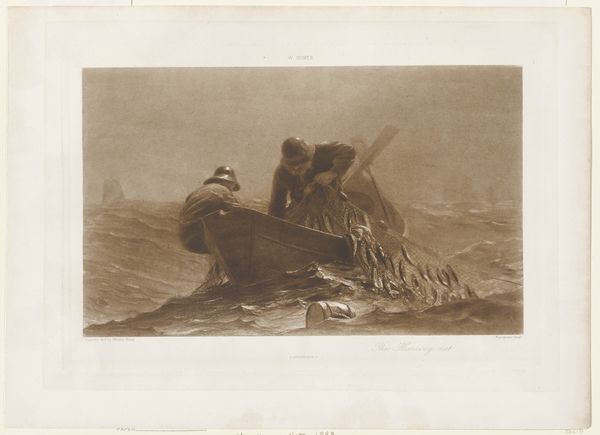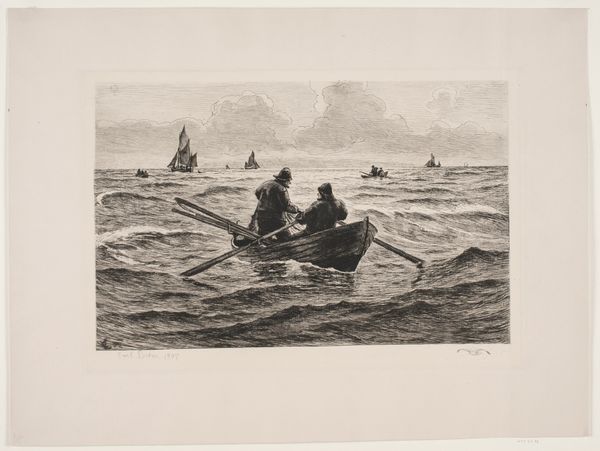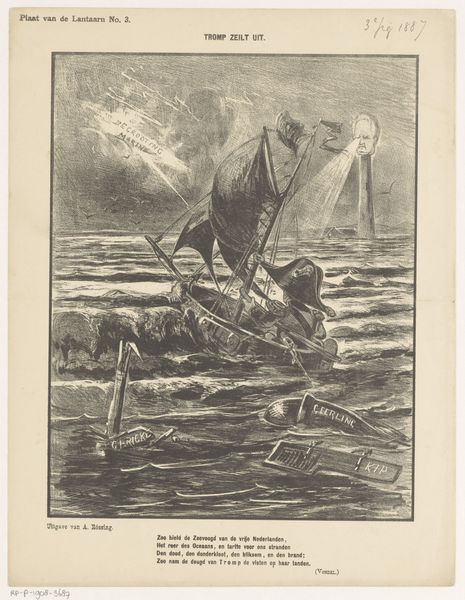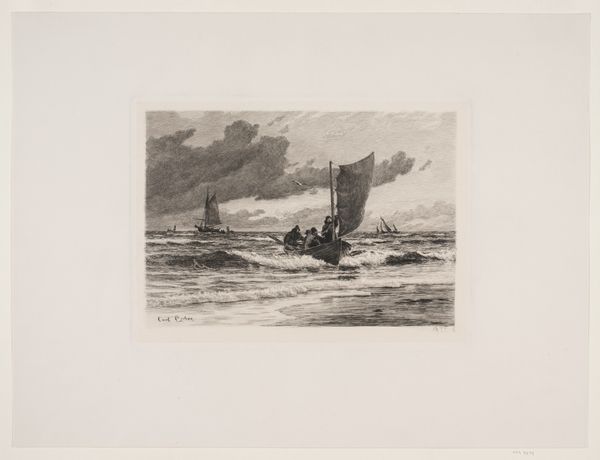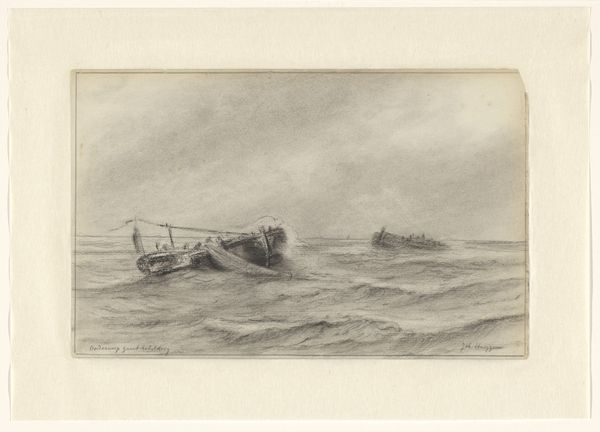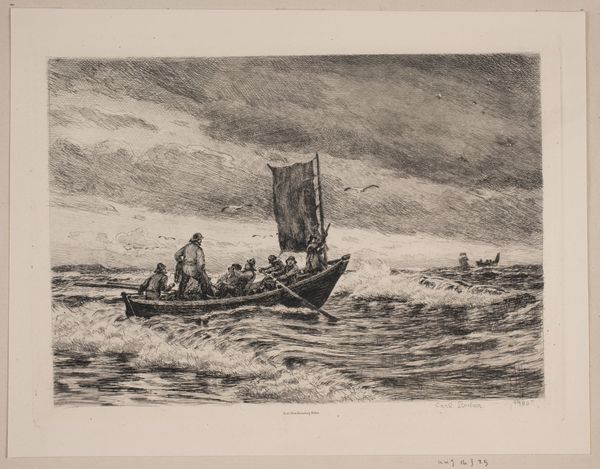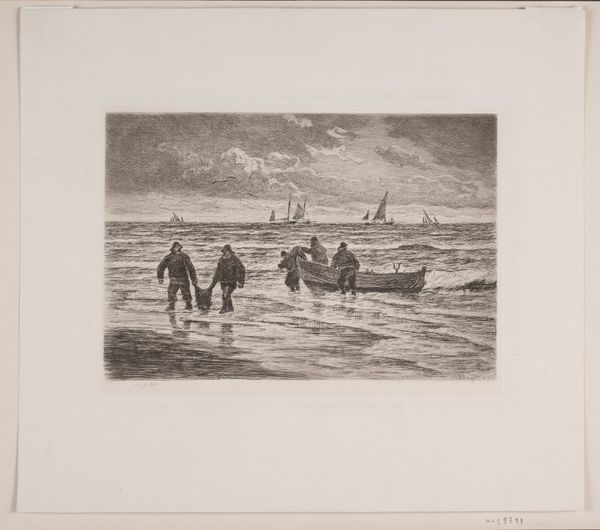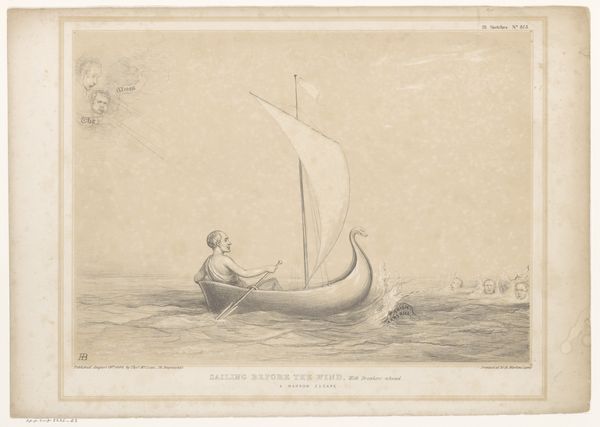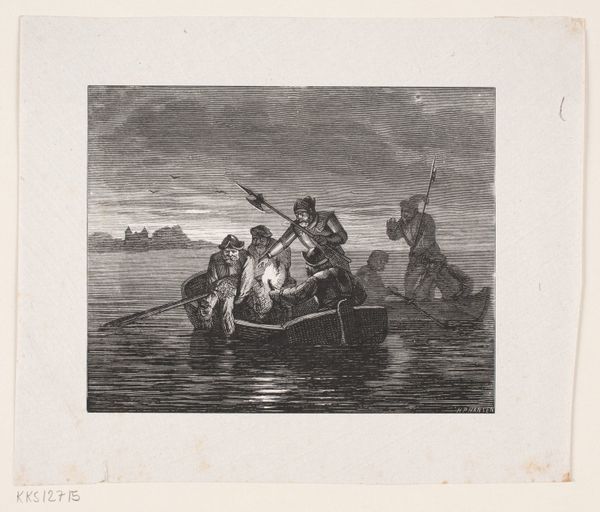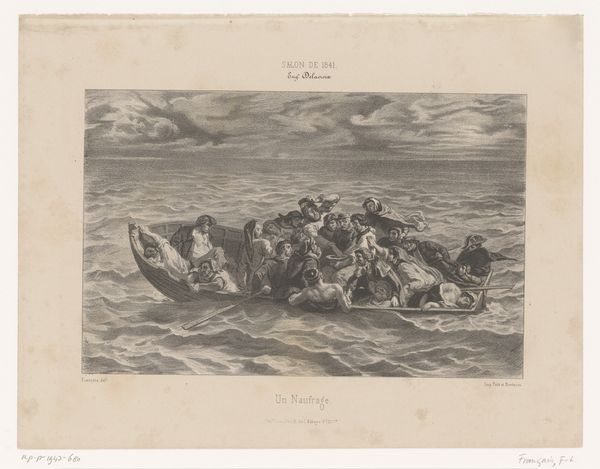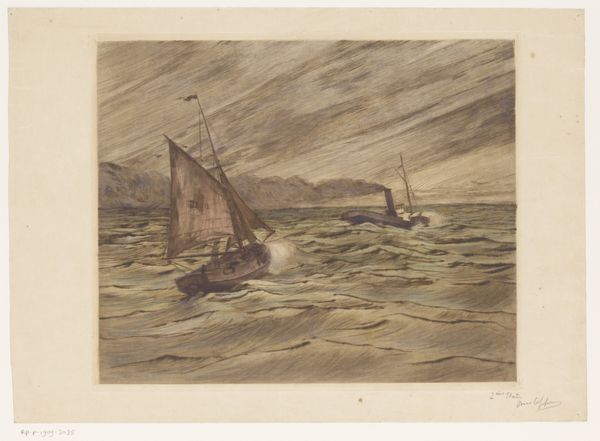
Dimensions: 7 5/16 x 11 15/16 in. (18.6 x 30.3 cm)
Copyright: Public Domain
Editor: This is Winslow Homer’s "The Herring Net," created in 1893. It’s a watercolor painting depicting two fishermen hauling in their catch amidst a stormy sea. I’m struck by the somber mood and the evident struggle against the elements. What stories do you see in this work? Curator: Absolutely. I see Homer’s work as deeply entrenched in the social and economic realities of the late 19th century. These weren't just romantic landscapes; they depicted the working class facing precarious conditions. Consider how industrialization impacted maritime communities, creating both opportunity and vulnerability. Editor: Vulnerability, yes. The way they're dwarfed by the waves definitely emphasizes that. It feels very different from some of the idealized landscapes of the time. Curator: Precisely! It rejects the romantic gaze and points to the power dynamics inherent in labor and the environment. These men’s livelihoods are entirely at the mercy of nature, and we see them actively wrestling with that power. Consider also who typically controlled and benefitted from resources such as Herring in that location and time, and how that connects to class and racial stratifications. Editor: That makes me consider what it meant to represent these struggles at a time when there were significant social reform movements gaining traction. Was Homer trying to say something about labor conditions or social injustice? Curator: I think it’s difficult to ignore the potential commentary on labor exploitation, considering that other artists such as Millet, Courbet, and Daumier were engaging similar topics in different ways. Though, whether Homer was explicitly advocating is less clear than in Daumier’s prints, for instance. Ultimately, "The Herring Net" speaks to a complicated relationship between humans and nature, and reveals socio-economic fault lines. Editor: It’s fascinating to think about it as more than just a scene, and considering how art is often shaped and in turn shapes how society views social issues. Thank you! Curator: Indeed! Reflecting on art’s role in mirroring and challenging society helps us engage in more informed and meaningful interpretations of visual culture.
Comments
No comments
Be the first to comment and join the conversation on the ultimate creative platform.
